A beautiful mid-February afternoon, spent driving around Bannockburn, brought me to one of the older properties on Felton Road – for many years now, known as Terra Sancta. Spending an hour touring the property, winery, and then chatting with winemaker Austin Black back at the beautiful, characterful, Cellar Door, ably assisted by Bruna.
A full interview with Austin, and notes from an eye-opening tasting, will be in our Winemaker Series any day now…
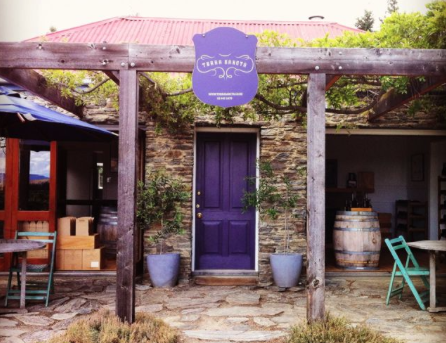
WineFolio: Tell me about the property here – I’ve heard it has an interesting history.
Austin Black: I should start with where we are, and what this is… Terra Sancta was first planted by the Olssen family in 1991. When the first blocks were planted there was nothing here, just pasture. Jacksons and Slapjack blocks are still on their own roots – those original plantings. Mark and Sarah bought the old Olssens business and property in 2012 and we’ve kept the old vines where we can – we got rid of the Cabernet and the Pinotage though. We’re now organic, not fully certified yet, but we’ve been farming organically for 4 years.
We treat this place like a farm now – we’ve got goats, sheep, 600-and something chickens; and the farm happens to produce wine. We’ve got rows of beneficial grasses, natives and some other things like daikon radish to open up the soil and get air in, pathways for microbes – without turning the soil. We’re no-till – we don’t turn the soil at all, which means that our under-vine management program is either people, or a new piece of equipment called a Multi-Clean – just a big whipper-snipper that cleans up under the vines without turning the soils. For us it’s about treading lightly. Soils here are very bony, it’s mostly schist; so we’re looking to build up the biomass and encourage microbial, insect and bird life. If it means our vineyards look a little scruffy, we don’t really mind.
That soil from Jacksons Block is classic Bannockburn schist on this side, and on that side we’ve got clay. We’ve a gully in between – Slapjack Gully – and Miro’s is over on the terraces. When we taste the wines those differences are not massively geographical – about 100 yards from there to there – but the wines are intensely different. Three hundred yards away we have another block down along the river with a high level of lime in the soils, and that makes a very different style of wine again.
The history of Otago is not super old, but this was the first block planted in the Cromwell basin. Obviously the original pioneers were here, but in terms of the Cromwell region – Slapjack was the first block – right in the heart of Bannockburn. We get a lot of protection from the weather here – it’s very dry and less windy than you would get even on the other side.
In 2012 there was no winery, so the big red shed was built in 2013. We’ve got our own bottling line now; which is good to have control – but bad as we’ve don’t always have enough room for the line and all the dry goods that come with it.
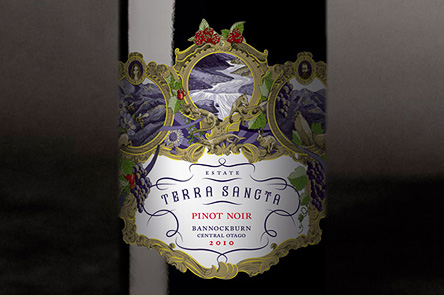
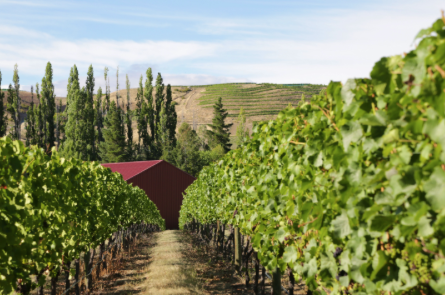
WF: You’ve got interesting labels – quite a brave design (at the time).
AB: The owners – Mark was a former CEO of the Stock Exchange, and then sold up and bought this place; and Sarah as well is from the corporate world- they are both here every day; so every decision we make, every tasting we do, blending is done around the table, and done collaboratively. I enjoy that, it’s not a case of ‘I make wine and present it’ – it’s the most interesting part of it. Mark is very involved in the production side of things, but the branding and labelling and presentation of the wines, is massively important to them. It can’t just be about what’s in the bottle. That should be good, but you do have to package these things – it has to be something they are drawn to, and remember. They didn’t want just another white square.
WF: Do you get many visitors through the Cellar Door?
AB: Many years ago Bannockburn as an area got lots more visitors than it gets now, because Gibbston Valley has done such an amazing job of making it easy for tourists to do 5 or 6 wineries in an afternoon. They’ve got the cycle trail, the Gibbston Back Road, so it’s easy to get around. So there is less general foot traffic on Felton Road these days than there used to be. We get less people, but it tends to be the committed wine drinker. It’s quite different out here to Queenstown. You’re not going to come to New Zealand for Cromwell, but a lot of the big wine names that you know are here in the Cromwell area. Gibbston is a lovely day out and some of the wines are lovely – I’m a massive Chard Farm fan as I worked there for three years. They’ve been making the wines that everyone now craves, but for 20 years.

When people come to Terra Sancta to taste Pinots – Jacksons is the wine they tend to expect. Purple, blue and red fruits, rosemary and thyme, more savoury tannin. We only make 2-300 cases of each single block; and this is the one that our mailing list likes.
When you get the finish, it doesn’t leave you with oak or structure – it’s fruit that carries through. So you’re left with all the flavours of the wine still going, and it’s not herbs, oak, acid – it’s seamless. If I’m writing my blending notes, and I can’t write anything – if I can’t pick it apart – then I’m happy with that, I know it must be OK.

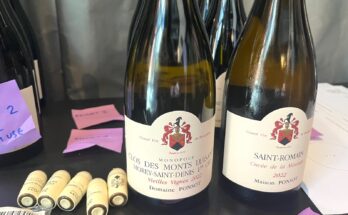
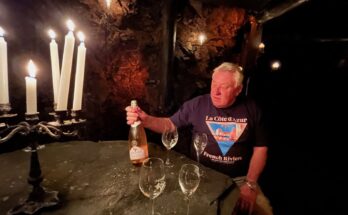
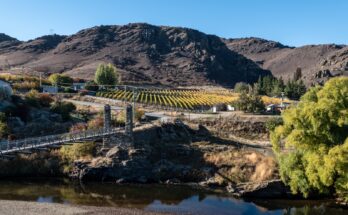
2 Comments on “An afternoon with Terra Sancta”